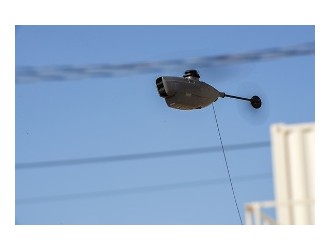
The primary deadline was originally set for April 22, 2014, just a few months after the rule was released. But the agency later extended the deadline by a year, saying the original deadline provided too little time for the agency and the affected operators to implement the new requirements. At the same time, though, the agency reaffirmed original deadlines for the equipment mandates, as well as for the operations control center and pilot-in-command instrument qualification requirements. Mandates for radio altimeters, emergency equipment, helicopter terrain awareness and warning systems and PIC instrument qualifications are all set for April 24, 2017, while the operations control center needs to be in place by April 22, 2016 and the flight data monitoring system by April 23, 2018.
The FAA has been writing guidance on different aspects of the rule and last fall released the proposed operations specification covering the rule’s primary requirements. Late last year the agency put out for comments the proposed FAA inspector guidance, covering training and testing for pilots and training for the operations control specialists.
Operators, facing the looming April deadline, have been anxiously awaiting the final guidance. “It’s coming down to the wire,” said Christopher Eastlee, president of the Air Medical Operators Association (AMOA). Eastlee noted that operators need the guidance before they can updat their own operations and training manuals in compliance with the rule. Such updates can be an involved process that takes months. “That process cannot start until the guidance is available,” he said.
Speaking to a recent HAI Government-Industry forum, Les Smith, manager of the FAA’s Air Transport division, said the agency expects to publish the primary operations specification in March. Operations specification language regarding the data-collection requirements, however, may come later. Operators are required to collect data regarding flights and denied trip requests beginning this year. But Smith told operators that because the affected operations specification involves data collection, it requires Office of Management and Budget review. This may push off its release. While the first data report is due in January 2016, Smith assured operators, “We will take whatever data you have. We won’t require the collection before the operations specification is released.”
The agency has been focused on inspector training in preparation for the new requirements. It also is planning further industry outreach in addition to the recent HAI Government-Industry Forum, which was also sponsored by the AMOA and the Association of Air Medical Services. Operators encouraged the agency to hold gatherings that would enable FAA officials, inspectors and operators to resolve any questions surrounding the rule.
FAA Flight Standards director John Duncan told attendees at the recent forum that the agency is pushing toward performance-based requirements with the rule. The goal is to provide “a lot of latitude,” he said. “What’s required here is the minimum.”
The agency also is taking a number of steps to help facilitate the equipment deadlines, particularly as it has limited resources for the necessary approvals. This is particularly important because operators must deal with the 2020 ADS-B OUT mandate in addition to the HAA requirements.
The FAA consolidated and reorganized its Rotorcraft Directorate in the Southwest and created an organization delegation authorization office to improve its delegation functions. “We want to fully delegate everything we can [using a risk-based model],” said Lance Gant, acting director of the Rotorcraft Directorate. “We hope to improve the process and speed,” he added, noting this must be accomplished with safety in mind. “It’s a delicate balancing act.”
Some of those efforts are beginning to pay off. Gant noted that getting HTAWS installed had been a more cumbersome process. Now, field approvals are taking two to three days. Even so, the FAA’s ability to keep up with the multiple approvals concerns operators. Eastlee noted that the FAA’s resources are already strained by rapid advancements in technology. Along with the mandates, operators already are voluntarily upgrading cockpits with equipment such as autopilots.
While concerns surround the FAA’s ability to keep up with the necessary approvals, Eastlee said air-medical operators endorse the equipment mandates. Many air-medical operators have already complied with some of the requirements, such as for installation of radar altimeters. But the radar altimeter requirement extends to other operators, who question the need for the expanded applicability. Air-tour operators note the requirement stems from an NTSB recommendation that radar altimeters be installed on passenger-carrying helicopters that operate in areas wher flat light or whiteout conditions routinely occur. These conditions are far less likely in air-tour operations.
Duncan, however, told operators that the radar altimeter requirement also is a congressional mandate, providing the FAA few options on the issue. However, Duncan suggested that operators could petition for a rulemaking change.
Another concern voiced by operators is the rule’s lack of accommodations for IFR flight. The agency late last year released a follow-on rule facilitating IFR departures at airports without weather-observation stations. Operators view the rule as a step toward correcting an issue created by a weather minimums provision in the original rulemaking. But, they fear it does not completely address the issue. During the government-industry forum, FAA officials reassured attendees that the rule was not intended to restrict IFR flight.
Operators are also wary of the operator control center requirement. “There is nothing like this in Part 135,” Eastlee said. While many operators have already established the centers, the FAA has not released guidance on the details of the new requirement. Operators are hopeful that guidance will reflect best practices rather than an entirely new approach that could be costly and complicated to implement.
Overall though, Eastlee stressed the importance of the rule. “We support all of it,” he said. “We just want to make sure the FAA can provide the guidance in a timely fashion.”





